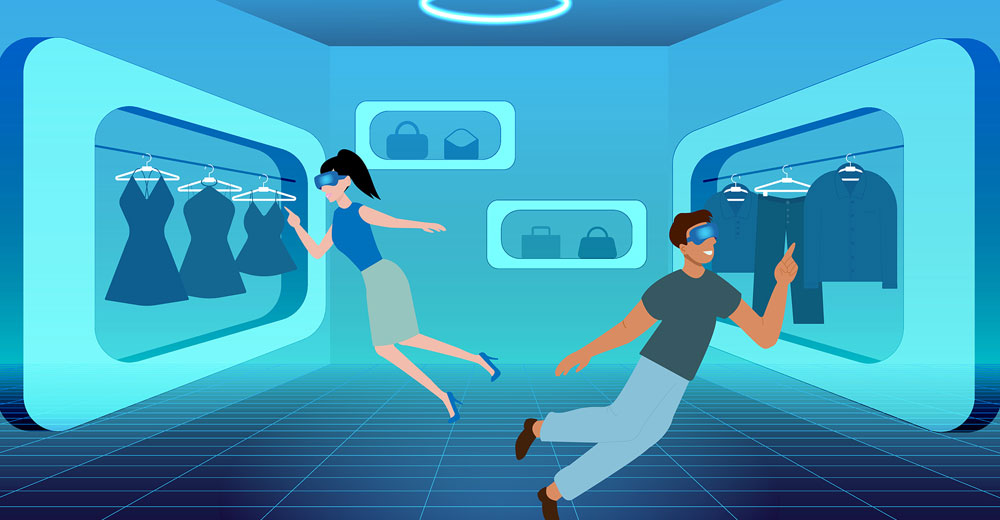A key to business survival may depend on how effectively retailers and other businesses can blend digital and in-person customer experience (CX) tactics.
The pandemic came close to nailing the coffin shut on the livelihood of brick-and-mortar stores. Despite shoppers’ attraction to the convenience and health safety of online shopping, their appetites for in-person buying experiences are keeping some storefronts from joining the life support victims or worse.
Surviving retailers are adapting to new shopper trends as retailers emerge from the pandemic. However, all store operators must come to terms with post-pandemic shopping realities. If they do not adapt to the new shopper mores, foot traffic will not return their way any time soon.
New Normal ‘Disruption as Usual’
Brands are moving to meet that same refit of customer experience to attract both digital and physical foot traffic. Organizations see a future of constant change and continued challenges. Chief among them are significant staffing issues amid the “Great Resignation” and the widespread disruption in the global supply chain, according to Celia Fleischaker, chief marketing officer at Verint. Those issues seemingly have no resolution in sight.
“While brands have gotten over the initial shock and disruption of the pandemic, they now are operating in a state of ‘disruption as usual,’ needing to respond to ongoing rapid change,” she said, citing this year’s research recently revealed in the company’s Global Research on the State of Customer Engagement and Experience report.
New market research shows that shoppers are sticking with the habits they developed while they shunned physical shopping. For instance, researchers found that over 67% of consumers said that they would continue to shop online, according to Elissa Quinby, former Amazon leader and now senior director of retail insights at Quantum Metric.
“Twenty percent noted that they prefer to shop online and then utilize services like curbside pickup. As consumers gain confidence to re-enter public spaces, retailers must make the experience as seamless and flexible as possible to maintain their trust. In-store shopping will rebound only if retailers can enhance the experience with digital features,” she told CRM Buyer.
Key CX Challenges
Verint recently surveyed more than 2,700 business leaders from a variety of global industries to learn how they are adapting. Its research revealed three chief concerns:
- 76% of leaders believe customer engagement challenges will increase this year
- 71% find retaining talented workers to be moderately or highly challenging
- 52% have difficulties dealing with customer engagement due to supply chain issues
Organizations say understanding and acting on consumer behaviors and building enduring customer relationships are the top two challenges they face over the next 12 months. That result echoed similar findings last year.
Companies are embracing the means to support kinder, gentler, and more human-centric engagement. They are devising technology-infused strategies to safeguard both employee wellness and the delivery of empathic customer engagement.
Some 91% have adopted technology and strategies to support greater empathy in their customer engagement efforts for 2022, noted Fleischaker. A trend is well underway to deploy artificial intelligence to better drive intelligent engagement, according to Verint’s research.
It showed that 78% of business leaders say that expanding AI and automation are priorities for 2022. It also showed that 84% of organizations plan to invest in technology this year to support the right mix of self-service and human-enabled engagement.
Multiple Tools Address Customer Segments
Different generations value different tools and mediums for interacting with their favorite brands.
With so many digital options to choose from, and with consumers pulling businesses in multiple directions, brands must narrow their focus and ensure they are making the correct digital bets when it comes to the customer experience, suggested Kevin Lazorik, senior vice president for alliances at Hero Digital.
“Businesses must evaluate where their next digital investment should be and how these businesses can better understand their own customers through data to inform these decisions,” he told CRM Buyer. “Companies of all sizes are often tasked with the difficult decision of where to invest their budget to enhance customer experiences and ensure brand quality.”
Younger customers may be in favor of chatbots when seeking support. But older customers may demand they speak with a real person. The same goes for purchasing, returns, and all aspects of the customer journey.
In many respects, brands are being pulled in different directions by these generations. The big question is how companies can narrow their focus and be sure they are making the correct digital bets when it comes to their customer experience, she explained.
Merging Measurable Mashups
For retailers, it is especially critical that they integrate ways to merge digital and in-person shopping, observed Quinby. While cashierless checkout options and augmented reality window displays in stores might pique shoppers’ interests, they may not change habits in the long term.
“To keep people coming back in-store, retailers must ensure brand experiences are flexible, responsive, and personalized no matter where they are shopping,” she said.
Creative tactics to improve customer experience are essential. Limited-time discounts are no longer enough to get customers to shop in person. Large retailers like Target are leveling up by turning their stores into mini-malls and expanding curbside pick-up options, she explained.
Smaller retail shop owners must be in tune with their target customers and be selective in what digital approaches they can afford, cautioned Quinby. They are dependent on their clientele and their customer base and how they drive that loyalty.
“I think that technology will become available in different ways. The closer that companies can get to one-to-one personalization, the more they will be able to build that brand and trust and drive that customer loyalty to make sure that customers keep coming back and shopping. “
Marketers Must Have Digital Momentum
The retail industry is starting to see a new crop of digital tools coming to harvest, noted Quinby. Exactly what is available now depends on the type of user.
For instance, tech like virtual reality is already here. Its pace of deployment is going to accelerate over the next two to three years.
“I think the digital merge of the dressing rooms will take a little bit longer. We will not start to see an actual experience where a mirror takes your measurements and gives you custom size recommendations,” she said.
That is probably more than three to five years out. So, it depends on the innovation. But retail clothing stores will start to see it scale up because many shoppers are excited to go back into stores, she added.
The number one must-have item on her list for all businesses is personalization. Whether it is VR technology so you can see something in your home before you buy it or seamless delivery where you can pick it up at the curb. The catch is just making sure the marketing tools are as easy as possible for shoppers.
Quinby’s other must-have digital strategy is making sure that brands are aligned with their mission. It does not need to be all tech-enabled. However, brands must make sure the mission alignment is stated so customers can determine if their values align with a company’s vision and ambitions.


























































Social CRM
See all Social CRM